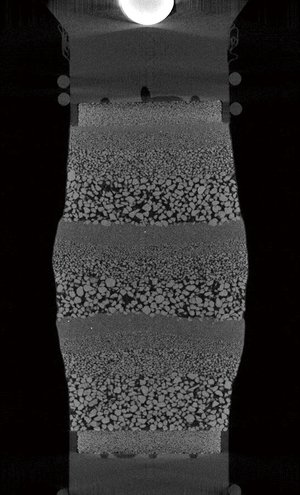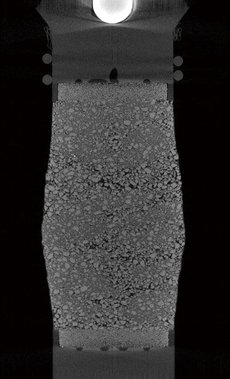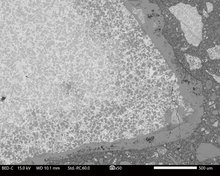Major Research Experimental research on the mechanical and physiochemical properties of slag having layered structure
This research project aims to experimentally investigate the mechanical and physiochemical properties of slag that has a layered structure, with emphasis on slag that are used as backfill material. While it is known that the presence of slag as well as granular sediment in the ground significantly affects the mechanical properties of the entire ground due to their uneven material and density structure in terms of granular orientation and other structural anisotropy, sand-clay strata, etc., it is expected that the presence of slag - especially steel slag - might make the ground's mechanical properties more complicated, because the material itself has a hydraulic property. On the other hand, although it has been revealed that the layered structure of granular ground has significantly higher strength (against static compression and liquefaction) than a uniform structure, researches that have identified this mechanism are very limited. In addition, if we could shed more light on the long-term reactivity of slag and its solidification characteristics,
it would be possible to evaluate the behavior of various ground materials throughout their lifecycles, which would in turn enable the development of a novel design protocol that factors in their temporal axles. In this research project, which involved slag typically used as backfill material along with several different ground specimens for comparison, we conducted triaxial compression and mechanical tests while focusing on the degree of their classification and solidification reactivity, and chemical analysis of the target materials using X-ray imaging, SEM, etc. The triaxial
compression test and the deformation characteristic analysis we conducted using X-ray CT scan revealed that the parts of the materials' layered structure that had particularly large granular diameters would exhibit significantly expansive behavior and that the difference in their deformation behavior largely contributed to enhancing the strength of their layered structure. In addition to, our various chemical analyses of the tested slag provided some key indicators that could be used to quantitatively evaluate the slag's solidification reactivity. Our next steps in this research include the relationship between the sedimentary structure of ground and its solidification in details more, which we will use the long-term behavior evaluation of slag.

Observation of the deformation condition of a layered structure (vertical fault image obtained by X-ray CT scan)

Observation of the deformation condition of a uniform structure (same image acquisition method as left)

SEM image of slag extracted from solidified ground (calcium cabonate covering around the slag and traces of reactivity seen up to 0.5mm from the slag surface)



